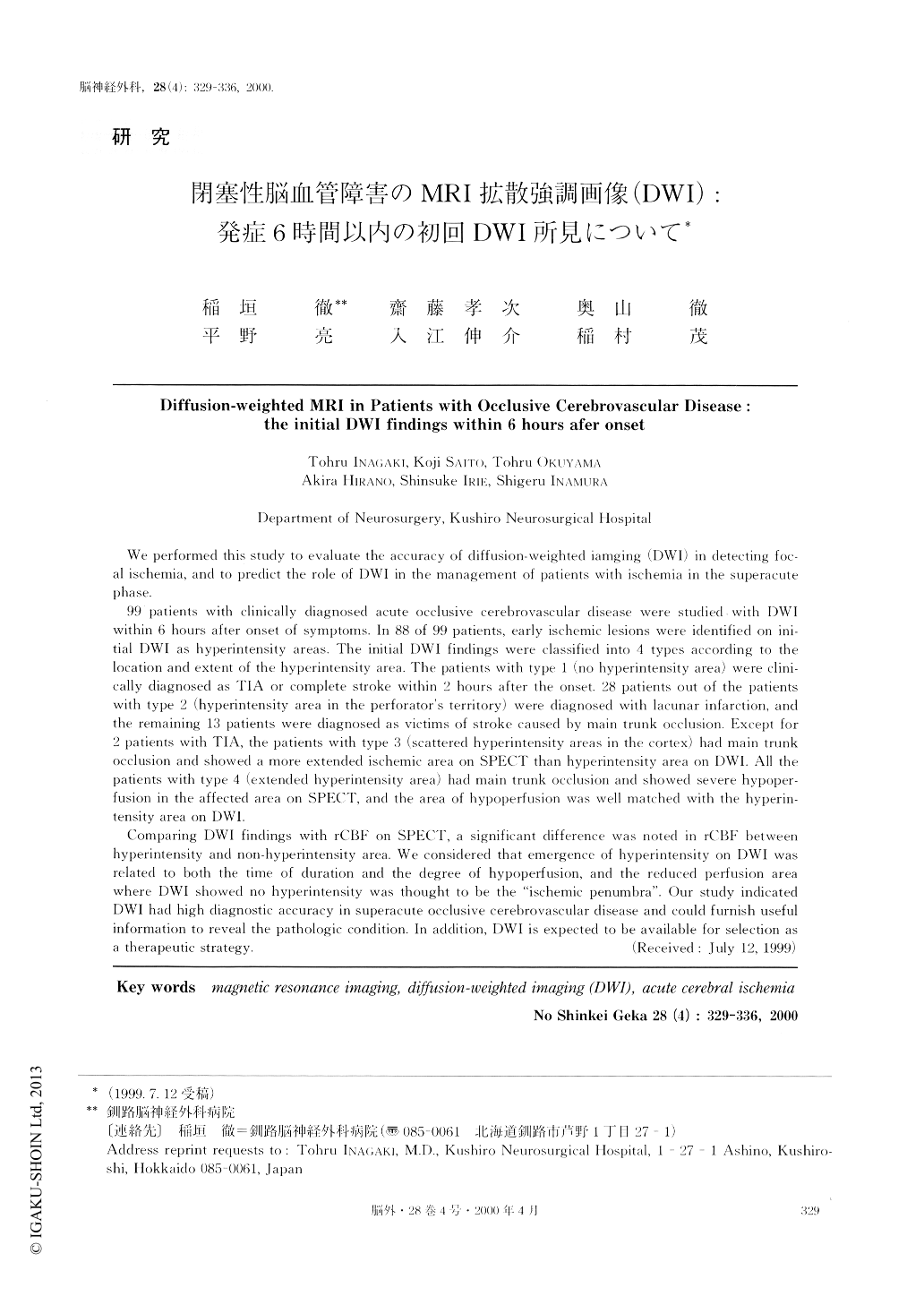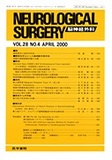Japanese
English
- 有料閲覧
- Abstract 文献概要
- 1ページ目 Look Inside
I.はじめに
脳梗塞の画像所見は時間経過とともに変化することが知られている.その初期変化をいち早く捕えて治療に結びつけることが重要であり,閉塞性脳血管障害のtherapeutic time windowは3-6時間以内と言われている.しかしながら,従来の検査法では発症より6-8時間以上が経過し組織学的な形態変化が起こった虚血巣がとらえられるのみで,すでに不可逆的となった領域が描出されるに過ぎなかった.近年,MRIによる拡散運動の画像化(MRI拡散強調画像:以下DWI)が進歩し臨床利用されるようになり3-6,10,18),虚血巣の描出に強く威力を発揮している.これは虚血後の初期変化である細胞性浮腫の段階にある病巣をとらえることが可能なためで,早き期画像診断の手法として,また治療方針決定の重要な指標として期待されている.われわれは脳主幹動脈閉塞症のDWI所見を4つのタイプに分類し急性期血行再建の適応について報告した8).今回はtherapeutic time window内の発症6時間以内に搬入された閉塞性脳血管障害症例を対象に,初回DWI所見を発症からの経過時間と残存血流量との関係について検討し,その所見より考えられる閉塞性脳血管障害の病態について考察した.
We performed this study to evaluate the accuracy of diffusion-weighted iamging (DWI) in detecting foc-al ischemia, and to predict the role of DWI in the management of patients with ischemia in the superacute phase.
99 patients with clinically diagnosed acute occlusive cerebrovascular disease were studied. with DWI within 6 hours after onset of symptoms. In 88 of 99 patients, early ischemic lesions were identified on ini-tial DWI as hyperintensity areas. The initial DWI findings were classified into 4 types according to the location and extent of the hyperintensity area. The patients with type 1 (no hyperintensity area) were clini-cally diagnosed as TIA or complete stroke within 2 hours after the onset. 28 patients out of the patients with type 2 (hyperintensity area in the perforator's territory) were diagnosed with lacunar infarction, and the remaining 13 patients were diagnosed as victims of stroke caused by main trunk occlusion. Except for 2 patients with TIA, the patients with type 3 (scattered hyperintensity areas in the cortex) had main trunk occlusion and showed a more extended ischemic area on SPECT than hyperintensity area on DWI. All the patients with type 4 (extended hyperintensity area) had main trunk occlusion and showed severe hypoper-fusion in the affected area on SPECT, and the area of hypoperfusion was well matched with the hyperin-tensity area on DWI.
Comparing DWI findings with rCBF on SPECT, a significant difference was noted in rCBF between hyperintensity and non-hyperintensity area. We considered that emergence of hyperintensity on DWI was related to both the time of duration and the degree of hypoperfusion, and the reduced perfusion area where DWI showed no hyperintensity was thought to be the “ischemic penumbra”. Our study indicated DWI had high diagnostic accuracy in superacute occlusive cerebrovascular disease and could furnish useful information to reveal the pathologic condition. In addition, DWI is expected to be available for selection as a therapeutic strategy.

Copyright © 2000, Igaku-Shoin Ltd. All rights reserved.


